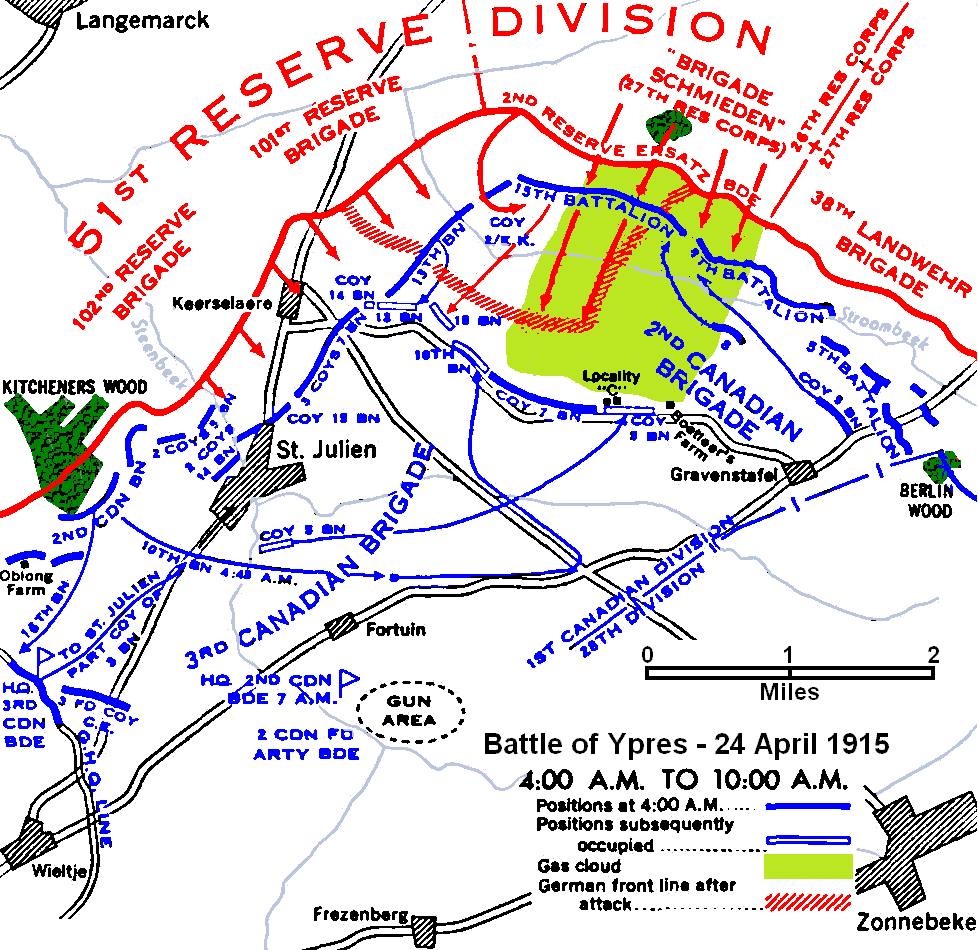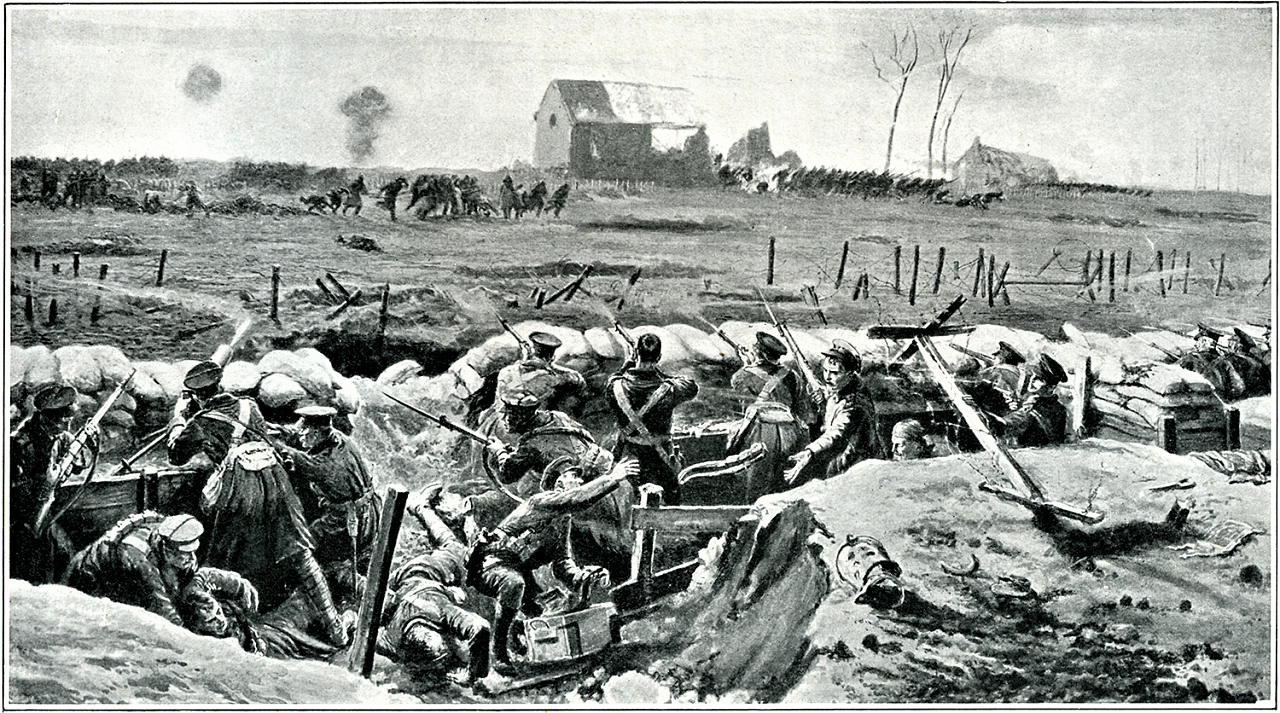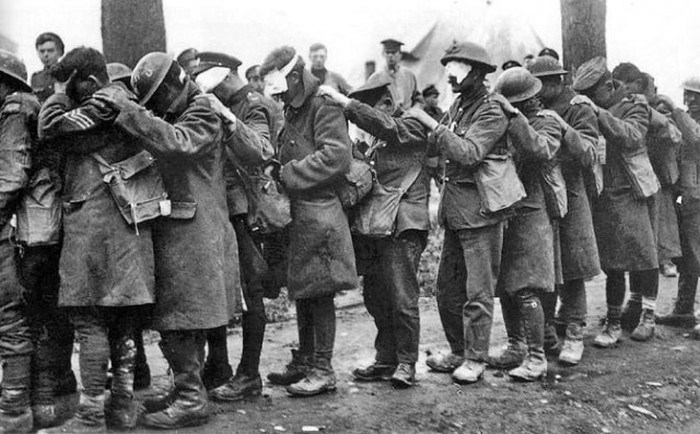Ypres Part Two - St. Julien

Despite the success of the charge at Kitchener's Woods, the Canadians were forced back to the village of St. Julien. Only the heroic actions of a few machine gun crews prevented the Germans from breaking through the new Canadian lines. On the morning of April 24, the Germans released another chlorine gas attack against the new Canadian line just west of St. Julien. Despite using urine soaked facecloths, the Canadians were unable to stop the Germans. The Canadians were driven out of village but then launched a series of fierce counter-attacks. These attacks failed, with heavy Canadian casualties but they succeeded in stopping the German advance

On April 25th and 26th British forces tried to push the German out of St. Julien but failed. On April 26th the Canadian Division retired to secondary positions, which they held on until 4 May. From April 22nd to April 26th the Allies suffered over 87,000 casualties including 1,000 Canadians killed and 5,000 wounded many due to severe gas burns causing permanent lung damage

Ypres demonstrated many problems for the Canadians. The Canadian Ross Rifle was not suitable for trench warfare. It jammed too easily when dirt stuck in the firing chamber or when poor quality British ammunition was used. As well, the Canadians used out-dated pre-war open field attack tactics taught in training camps against machine guns, and they were completely unprepared for poison gas attacks. "In Flanders Fields" was written by John McCrae of Guelph in response to seeing the horrific casualties from the battle.
Here is a short video about the Battle of Ypres. Click on the link to view the video. At the end, click on the left or back arrow at the upper left corner of the screen.
"The Second Battle of Ypres" Canada's History 2:00 min.